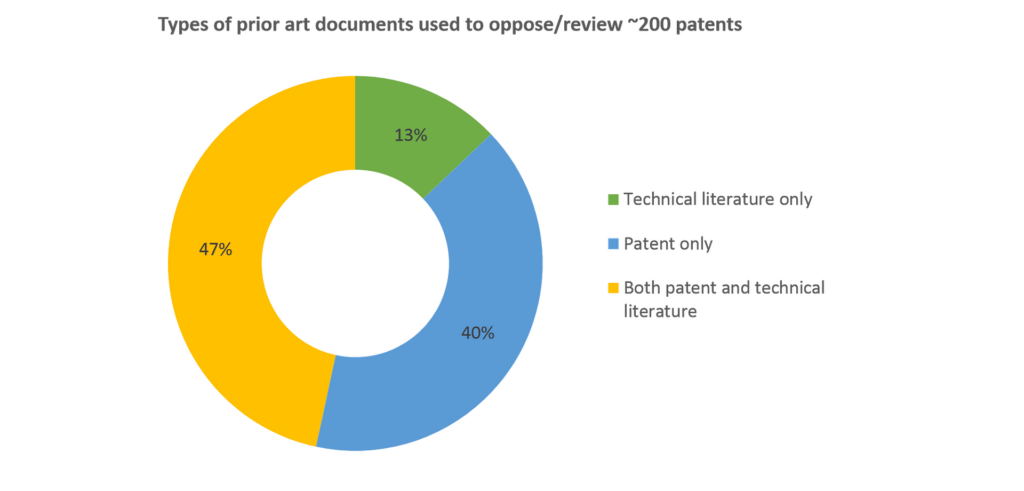Patents can be shields and swords in the intricate dance of innovation and competition. But what happens when the strength of a patent is called into question? For corporations, challenging patent validity isn't just about legal maneuvering—it's a calculated move that can protect markets, disrupt competitors, and influence billion-dollar decisions.
What drives companies to invest in uncovering cracks in a competitor's patent armor? And how do they ensure their defenses hold firm? This blog delves into the strategic reasons behind patent challenges, uncovers the most effective invalidation approaches, and highlights key trends shaping the U.S. and European IP landscapes. Understanding these tactics can give your business a decisive edge in the high-stakes world of intellectual property.
Why Would a Corporation Challenge the Validity of a Patent?
Corporations question or contest patents for strategic reasons, often tied to business-critical decisions. Here are the three most common scenarios:
Evaluating a Patent for Acquisition
Before investing in a patent, corporations conduct thorough validity checks to ensure their claims hold up under scrutiny. A weak patent can lead to wasted resources and missed opportunities.
Defending Against Patent Infringement Claims
Companies targeted in patent infringement lawsuits may seek to invalidate the patent to avoid costly settlements or licensing fees that could impact their bottom line.
Preemptively Opposing a Competitor's Patent
Corporations can prevent potential roadblocks or threats to their operations and future innovations by challenging a competitor's patent.
While these are the primary reasons, other factors—such as industry-specific concerns or regulatory implications—can also motivate validity challenges.
Connecting Strategy with Action: How Searchstream Can Help
Corporations often turn to expert services like Searchstream when the stakes are high. This platform provides transparent, scoped, and legally compliant search proposals, offering a reliable support system that helps businesses identify the best prior art for challenging patents. With such expert support, you can approach patent challenges with confidence and security.
Ready to optimize your IP strategy?
Explore how Searchstream's tailored solutions can support your goals.
How Do Corporations Challenge a Patent's Validity?
Invalidating a patent requires a strategic approach, often involving extensive research and legal expertise. Based on Evalueserve’s analysis of 100 successful patent oppositions at the EPO and 100 inter partes reviews at the USPTO, four primary methods emerge:
Finding New Prior Art (Novelty Challenges: USC 102 in the U.S. or ‘X’ in EP)
The discovery of previously uncited prior art remains the most robust way to challenge a patent’s validity. However, locating such documents demands significant expertise and effort.
Establishing Obviousness (USC 103 in the U.S. or ‘Y‘ in EP)
The most frequently used approach is introducing new prior art to argue against the inventive step, and more than 50% of successful cases leverage this strategy.
Leveraging Existing Prior Art
Corporations sometimes use prior art cited during the patent’s examination phase to argue a lack of novelty or obviousness. While this method is less common, it can still be effective strategically.
Employing Legal Arguments
Legal challenges that do not rely on prior art—such as questioning the enablement, sufficiency of disclosure, or unauthorized amendments—are particularly practical in specific contexts, such as EP oppositions.
These approaches highlight the importance of creativity and precision in patent validity challenges, ensuring corporations maximize their chances of success.

Transitioning to Trends: U.S. vs. EP Approaches
The methods used to challenge patents differ slightly between jurisdictions, reflecting regional nuances in patent law. Let’s dive into the key trends in the U.S. and EP opposition processes to equip you with actionable insights. Understanding these trends lets you stay ahead and make well-informed decisions in your patent challenges.
U.S. Inter Partes Review Trends
- 88% of successful reviews relied on identifying new prior art, demonstrating the importance of fresh evidence.
- 12% used existing prior art, often with a focus on USC 102 arguments, which succeeded in 60% of these cases.
- Over half the successful cases combined patent and technical literature as prior art.
EPO Opposition Trends
- 66% of successful oppositions used newly discovered prior art to challenge a patent.
- 30% relied on legal arguments to invalidate all or part of a patent’s claims.
- A higher percentage of cases at the EPO utilized non-patent literature compared to the U.S., reflecting differences in evidence preferences.
Lessons Learned: Strategies for Success
y analyzing trends across jurisdictions, several critical insights emerge:
Examiner-Cited Prior Art Is Not Always Exhaustive
- Even prior art identified during the patent examination phase can be reinterpreted or overlooked, providing opportunities for opposition.
Legal Arguments Are Valuable
- Issues such as enablement, sufficiency of disclosure, or unauthorized amendments often form the basis of successful challenges, particularly in EP oppositions.
Prior Art Discovery Is Key
- The most effective strategy remains to uncover new prior art. This method has a 66% success rate in EPO cases, highlighting its value in challenging patents.
Combine Patent and Technical Literature
- In the U.S. and EP, leveraging a mix of patent and non-patent literature strengthens arguments and improves outcomes.
Supporting Validity Searches with Expertise
Given the complexity and stakes of patent validity challenges, corporations often partner with expert search firms to identify the most relevant prior art. This approach ensures that their strategies are grounded in strong evidence, increasing the likelihood of success.
What's Next?
In the next installment of this series, we'll dive into practical strategies for uncovering high-quality prior art that attorneys can use to challenge patents. Stay tuned for actionable insights that can help your business navigate this critical aspect of IP management!
Talk to One of Our Experts
Get in touch today to find out about how Evalueserve can help you improve your processes, making you better, faster and more efficient.


